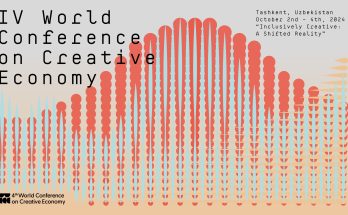 This year’s Kashmir and North-East floods, following last year’s Uttrakhand tragedy, have yet again highlighted the shortcomings in our disaster management and rehabilitation strategies — at the national and state level. In the recent past, questions have been raised regarding the management and relief efforts post the flash floods in Kargil, the horrific Uttrakhand tragedy which killed killed thousands, as well as last year’s windstorms that hit the Kashmir valley. While the heroic efforts of the Indian Army, relief workers and enthusiastic volunteers in such situations should not be discounted, it is imperative to learn lessons for better preparedness in future.
This year’s Kashmir and North-East floods, following last year’s Uttrakhand tragedy, have yet again highlighted the shortcomings in our disaster management and rehabilitation strategies — at the national and state level. In the recent past, questions have been raised regarding the management and relief efforts post the flash floods in Kargil, the horrific Uttrakhand tragedy which killed killed thousands, as well as last year’s windstorms that hit the Kashmir valley. While the heroic efforts of the Indian Army, relief workers and enthusiastic volunteers in such situations should not be discounted, it is imperative to learn lessons for better preparedness in future.
Disaster management can be broadly defined as “the organisation and management of resources and responsibilities for dealing with all humanitarian aspects of emergencies, in particular preparedness, response and recovery in order to lessen the impact of disasters”1 .
In this context, a lot is often written and said with regards to women’s vulnerability during the time of disasters. However, their role and potential in disaster management and disaster risk reduction is often overlooked, though they, when looked into the gender-specific capacities of women, can be significant contributors to disaster risk reduction and building resilience.
“In Honduras, for example, the village of La Masica was the only community to register no deaths in the wake of the 1998 Hurricane Mitch. Six months earlier, a disaster agency had provided gender-sensitive community education on early warning systems and hazard management. Women took on the abandoned task of continuously monitoring the warning system. As a result, the municipality was able to evacuate the area promptly when the hurricane struck.2 ” The above example is cited as an attempt to highlight the salient benefits of gender-sensitive disaster management which can arguably result in significant success in disaster risk reduction.
The need to mainstream gender within disaster management efforts has roots in the fact that statistically, women are the single largest demographic group worst affected by natural and human-caused disasters. Additionally, they are also the community requiring most support in the post-disaster environment. They are to be seen as the target group for relief initiatives as the primary responsibility of caring for the young, the elderly, the sick and those living with disabilities also lies on the shoulders of women.
Based on the reports of relief agencies like Red Cross and findings of researchers across the globe3 , women and children are particularly affected by disasters. In addition to the overall impact of the disaster on the general community, women are uniquely burdened by the breakdown of infrastructure, displacement and isolation, collapse of familial and social support networks. It has been observed that in the post disaster communities, women are at a greater risk of sexual and domestic violence. The loss of male bread winners and the male heads of household and/or livelihoods also contribute to increasing women’s burdens and responsibilities.
A woman’s pre-disaster familial responsibilities and roles are magnified and expanded by the onset of a disaster or emergency, with significantly less support and resources for those roles. Women’s lack of skills — including literacy, especially in countries with less access of women to education — combined with their lack of experience in the public sphere, makes it difficult for them to engage with relief and emergency response mechanisms that do not pay adequate attention to these realities. Women are most present in areas of employment within the agricultural and informal sectors, which are often the worst affected by disasters. Thus the rates of unemployment among women after a disaster are inordinately high.
In the recent context of the floods in different parts of the country, certain practices can be highlighted for a gender-sensitive approach.
• Close Interaction with communities in planning process
Most planning and preparedness for relief efforts typically takes place in bureaucratic surroundings. While research and analysis is certainly a part of this process, the inputs of locals are seldom sought. An inclusive disaster management plan would make a significant difference in times of crisis. It is important to align disaster management with best practices in gender inclusive governance, domestic as well as global. The case of Swayam Shikshan Prayog (SSP) is worth drawing valuable lessons from. The SSP was developed as a pilot collaborative effort in 1980 for encouraging women’s participation in an existing anti-poverty programme. It provided a platform to community-based women’s groups to interact with local government officials in six districts in the Marathwada region of Maharasthra. The SSP plays a big role in coordinating and channelising the training provided by different women groups and co-operatives in the field of education, health, construction, sanitation etc. Such training is found to have reduced women’s vulnerabilities in emergency situations and the post-disaster scenario. In the Latur and Bhuj earthquakes, the SSP women contributed significantly in repairing and rebuilding infrastructure.
• Gender disaggregated assessments
While the basic rule for relief efforts in times of natural disasters is to evacuate “women and children” first, there is a need to analyse the situation from a sensitively gendered lens as opposed to a limited view. During the Kashmir and North-East rescue and rehabilitatioin operations, sanitary napkins were deemed as ‘essential supplies’ by volunteers and relief agencies. This is an example of mainstreaming gender specific concerns in disaster management. Special attention ought to be paid to women’s needs in times of menstruation (consideration to cultural beliefs during menstruation, and women’s limited physical ability during this time). In addition to that, focusing on aspects such as easy and safe access to toilets (availability of wheelchairs for the disabled and sick); the availability of private areas for women to change clothes/bathe (curtained areas/camps/tents); special considerations and provisions for pregnant & nursing women (ante-and post-natal care: doctors, mid-wives, medicines etc) is integral to effective disaster management.
• Employment of female relief workers
Like in most professions, women are under-represented in the field of disaster management and relief efforts. The inclusion of more women in the process would inarguably augment the efficiency of the process. It is worth acknowledging that in the sociological/cultural context of India, it is not uncommon for certain women to be apprehensive about confiding in or about being touched by a male relief worker even in times of crisis. According to a Red Cross representative currently based in New Delhi, many women have inhibitions in sharing bed with strangers at shelters and therefore pre-disaster evacuation efforts are met with resistance.
• Involvement of affected women in relief efforts/planning
After the initial phase of relief and rescue operations have been accomplished, the involvement of affected local women in the management of refugee camps, distribution of food, etc could prove to be an asset. These women belong to the affected community and hence enjoy a degree of trust that relief workers would have to work hard to establish otherwise.
• Ensure relief reaches specific categories
Inarguably, in situations of disaster, the entire affected community must be aided and re-habilitated with equal urgency. However, it is a sad fact that specific sections of the population may face more vulnerability and difficulty in the rehabilitation process. Therefore, widows, single women, members of female headed households, elderly people and people with special needs must be given special consideration.
• Safety and security
Unfortunately, even the relief camps are not immune to abuse, violence and sexual harassment. Considering physical, geographical and psychological vulnerabilities of displaced women, safety is of prime importance. Secure areas should include safe sleeping arrangements, adequate lighting and accessible toilets and choice of safe location for camps. Designating women-only spaces (for changing, in times of menstruation, nursing etc) is also a need which is much ignored but necessary for effective management.
Additionally, gender-sensitive disaster management can be best aided by gender inclusive efforts. There is a lot that women could do to aid the process of relief and rehabilitation. For instance, traditional knowledge and skills of women can be used to manage natural resources, aid the injured and sick, prepare community meals and nurse displaced infants and children during reconstruction and recovery processes. Moreover, with adequate training we can capitalise on the clichéd role of women as emotional nurturer in PTSD scenario in survivors.
——————————————————————————–
1. International Federation of Red Cross and Red Crescent Societies Disaster Management
2. http://www.preventionweb.net/files/9922_MakingDisasterRiskReductionGenderSe.pdf
3. The Gendered Nature of Natural Disasters: The Impact of Catastrophic Events on the Gender Gap in Life Expectancy, 1981-2002, Eric Neumayer (London School of Economics and Political Science) and Thomas Plu¨mperw (University of Essex and Max-Planck Institute of Economics)
Courtesy: ORF
Author Profile
- India Writes Network (www.indiawrites.org) is an emerging think tank and a media-publishing company focused on international affairs & the India Story. Centre for Global India Insights is the research arm of India Writes Network. To subscribe to India and the World, write to editor@indiawrites.org. A venture of TGII Media Private Limited, a leading media, publishing and consultancy company, IWN has carved a niche for balanced and exhaustive reporting and analysis of international affairs. Eminent personalities, politicians, diplomats, authors, strategy gurus and news-makers have contributed to India Writes Network, as also “India and the World,” a magazine focused on global affairs.
Latest entries
 DiplomacyOctober 4, 2025UNGA Resolution 2758 Must Not Be Distorted, One-China Principle Brooks No Challenge
DiplomacyOctober 4, 2025UNGA Resolution 2758 Must Not Be Distorted, One-China Principle Brooks No Challenge India and the WorldJuly 26, 2025MPs, diplomats laud Operation Sindoor, call for national unity to combat Pakistan-sponsored terror
India and the WorldJuly 26, 2025MPs, diplomats laud Operation Sindoor, call for national unity to combat Pakistan-sponsored terror India and the WorldJuly 25, 2025When Fire Ends, Diplomacy Begins
India and the WorldJuly 25, 2025When Fire Ends, Diplomacy Begins India and the WorldJuly 16, 2025Operation Sindoor and its Aftermath: India’s Successful Diplomatic Outreach
India and the WorldJuly 16, 2025Operation Sindoor and its Aftermath: India’s Successful Diplomatic Outreach







